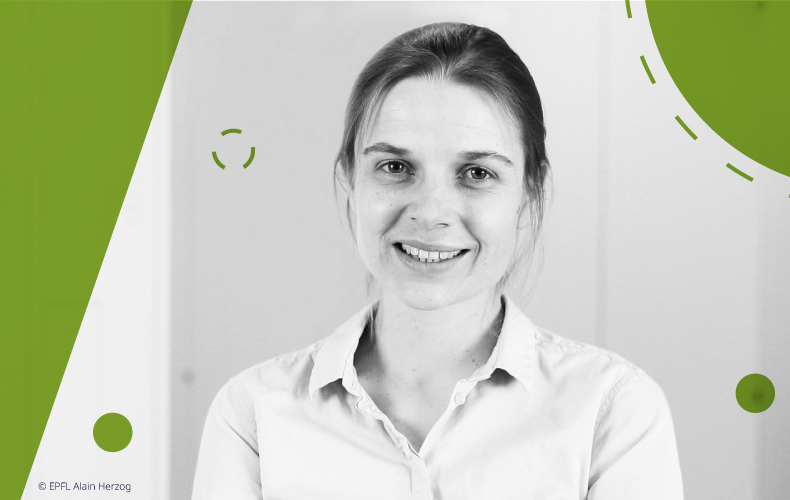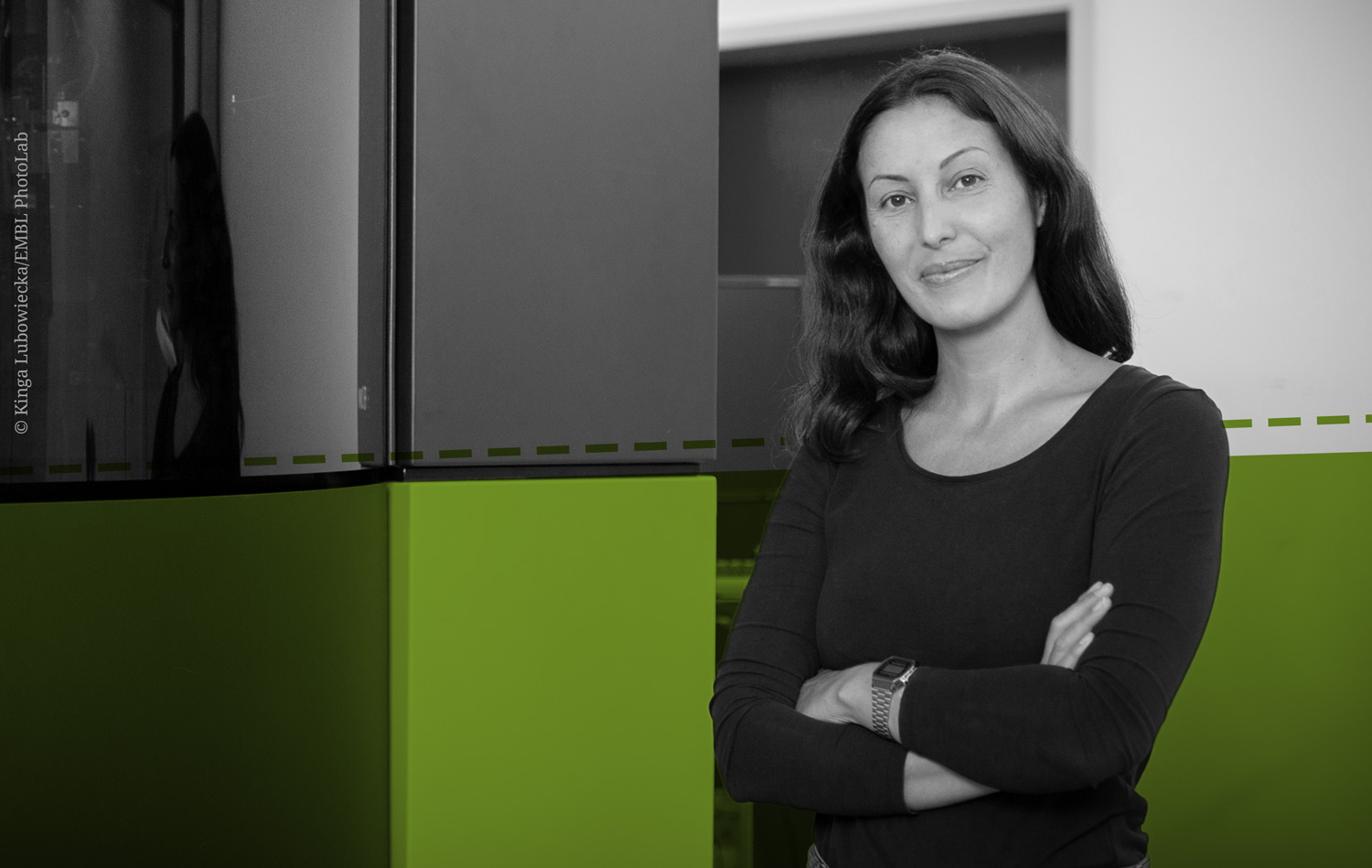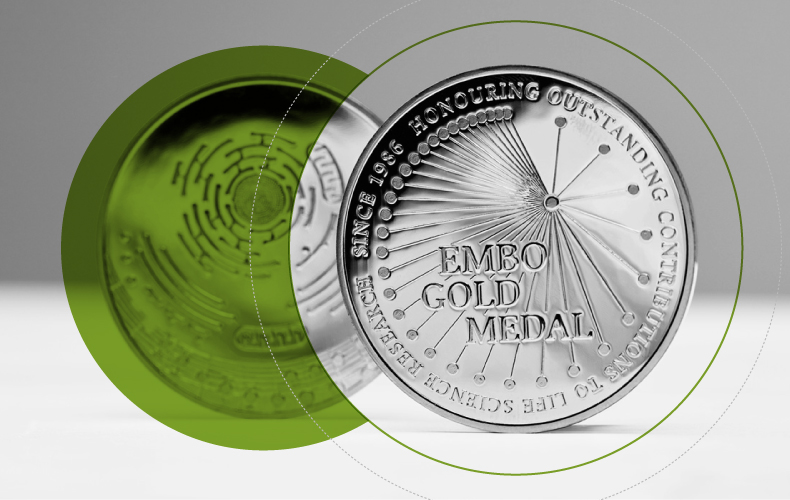15 June 2021 – Ten years ago, Andrea Ablasser, the recipient of the 2021 EMBO Gold Medal, was a postdoc in Bonn, suffering from a results drought that had her wondering whether to abandon the lab and return to a life as a clinician. Ablasser had graduated in 2008 as one of the top medical students in Germany, but made a sideways shift into research, moving from her native Bavaria to join Veit Hornung’s lab in Bonn. Hornung worked on an intriguing and fundamentally important problem—how the innate immune system recognises foreign nucleic acids—and Ablasser began trying to define the signalling cascade that leads from initial sensing of misplaced cytoplasmic DNA to production of an antiviral response. Things were not straightforward: “I was very well qualified to be a doctor, but to begin with at least, I wasn’t very experienced working in the lab”, she says, “and it was challenging to learn chemistry and biochemistry, which were very far away from my medical background. The only thing that felt slightly familiar was working with cells, which were a little closer to my human patients!”
Fortunately, towards the end of Ablasser’s six years with Hornung, there was a major breakthrough in the field. It had been known for a while that the ER-resident protein STING was required to initiate the antiviral response to cytosolic DNA, but in 2013, cGAS, the elusive cytoplasmic DNA receptor that functioned upstream of STING, was identified by Zhijian Chen’s lab in Dallas. Chen also showed that upon binding to DNA, cGAS catalyses the synthesis of an unusual second messenger molecule, the cyclic dinucleotide cGAMP, which binds to and activates STING. In short order, Ablasser, Hornung and their colleagues showed that cGAMP had an unorthodox 2’-5’-linked ring structure that defined a novel class of second messenger. Furthermore, Ablasser discovered that cGAMP(2’-5’) could be transferred through gap junctions into neighbouring cells, where it could trigger their STING receptors—an entirely unknown paracrine early warning system for alerting cells to foreign DNA incursion.
It was very exciting being at the beginning of an entirely new subfield of immunology.
In hindsight, Ablasser thinks that the unconventional nature of the cGAS-STING signalling pathway was the reason it proved so difficult to uncover such a fundamental aspect of biology. But contributing to solving two such important pieces of the puzzle meant that her years of hard labour had not been in vain, and she began applying for faculty jobs. “It was very exciting being at the beginning of an entirely new subfield of immunology, and of course it was a good topic and field to start my own lab”, she says. “There was so much not yet discovered, which allows you to explore.”
Ablasser was snapped up in 2014 by the Swiss Federal Institute of Technology in Lausanne. In the years since, she has cemented her reputation as an innovative and phenomenally productive scientist, in addition co-founding IFM Due, an immunotherapy company focused on cGAS-STING pathway antagonists. Her lab’s research has shown that the cGAS-STING pathway has multiple cellular functions in both health and disease, where cGAS, through its self-DNA sensing function, can be aberrantly activated in pathological processes such as ageing. Recently, her lab has combined with that of Basel structural biologist Nicolas Thomä to solve the paradox of how cGAS can see and respond to foreign DNA, but is inactivated when it encounters its own normal nuclear DNA: by cryo-EM, the collaborators showed it is trapped by nucleosomes in a state where it is unable to engage or sense DNA.
In research, and in particular when you are alone as a PI and you start your lab, it’s entirely up to you to make something out of your job, and that can be a little frightening.
Ablasser thinks her perspective on life as a scientist has been shaped by her early experiences in medicine. “Discovery-based research is quite a tough job with many uncertainties”, she says, “but I know that the work of a doctor in a hospital can be even more demanding.” Enjoyment is also important too: “I’ve always enjoyed doing experiments, and you have to enjoy what you’re doing, even if it’s just some very simple things like purifying cells or repetitive work. I simply liked doing the work, so I was never bothered by long hours in the lab.”
There have been a different set of challenges to those Ablasser would have faced as a clinician. In the lab, wrong decisions don’t have the potentially tragic consequences that mistakes in patient care might have, but the blank slate of discovery research can be alarming too: “In medicine, you follow a certain pattern of work and you don’t need to plan your day ahead—it’s the patients or the hospital that define your day”, Ablasser says. “In research, and in particular when you are alone as a PI and you start your lab, it’s entirely up to you to make something out of your job, and that can be a little frightening.”
I don’t think I need more motivation, but now there is a little bit of pressure to keep up the good work.
The EMBO Gold Medal is the latest in a long list of prestigious awards that Ablasser has accumulated in the last few years, but she says that this one is special: “I always thought that the people who won the EMBO Medal were really excellent scientists that I looked up to, and so it’s a very special honour to now also be a recipient of this award. I don’t think it will change anything in my mindset or in the way I do science, but the positive feedback will maybe give me some confidence that what we have done in the past is good and has been appreciated by our community. And I don’t think I need more motivation, but now there is a little bit of pressure to keep up the good work!”
Asked what other factors have contributed to her success, Ablasser is very clear that her lab deserves a lot of the credit: “Sometimes with awards, you mistakenly picture someone being great on their own, but I want to say I had a lot of luck because my first team members were very skilled, and I don’t take this for granted”, she says. “I think at the beginning of a career, you very much depend on the people you work with; in particular, the first students and postdocs that join the lab can really make a very big difference. I had a very good start and that was thanks to them, so I’m very grateful.”



